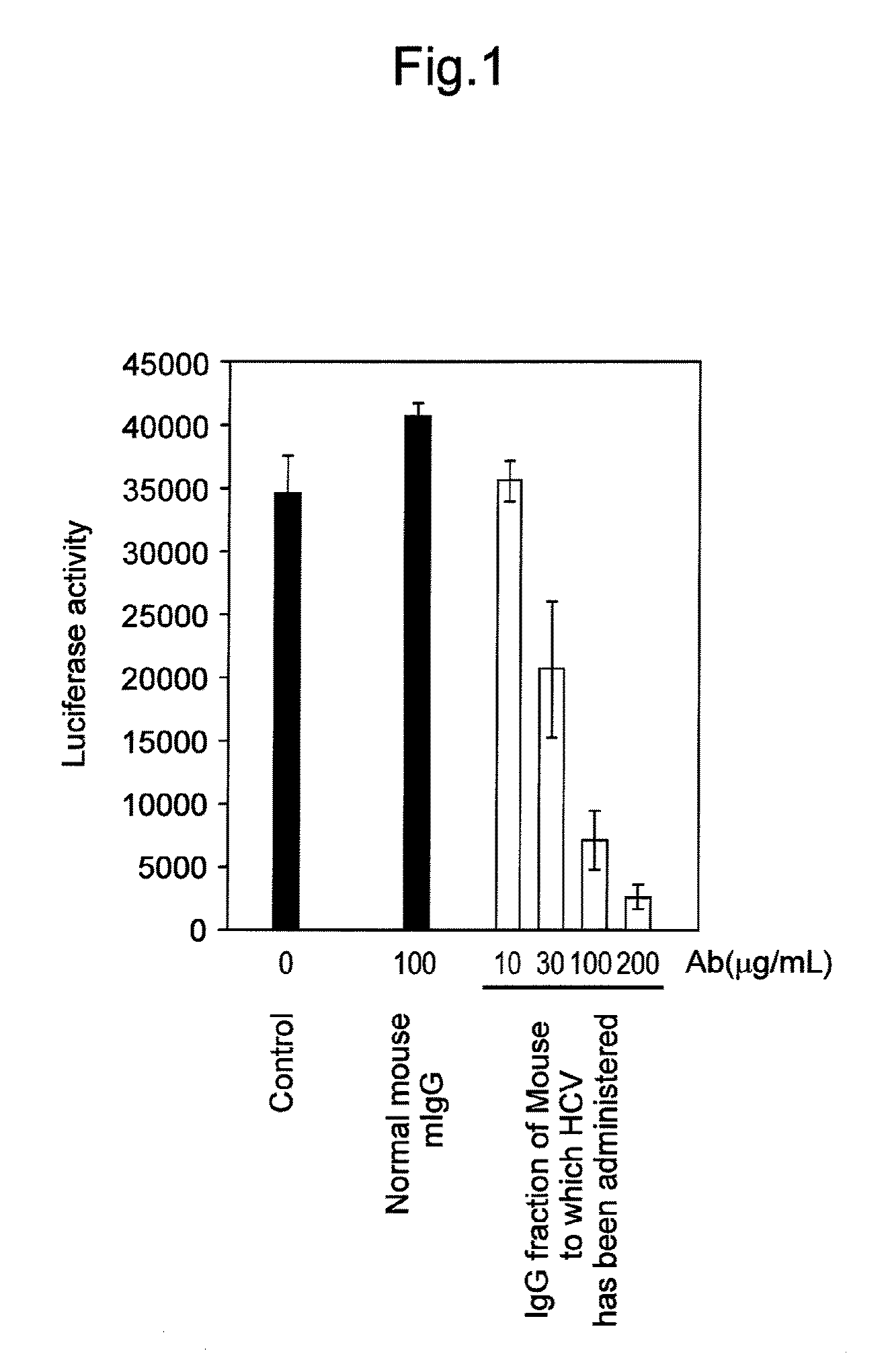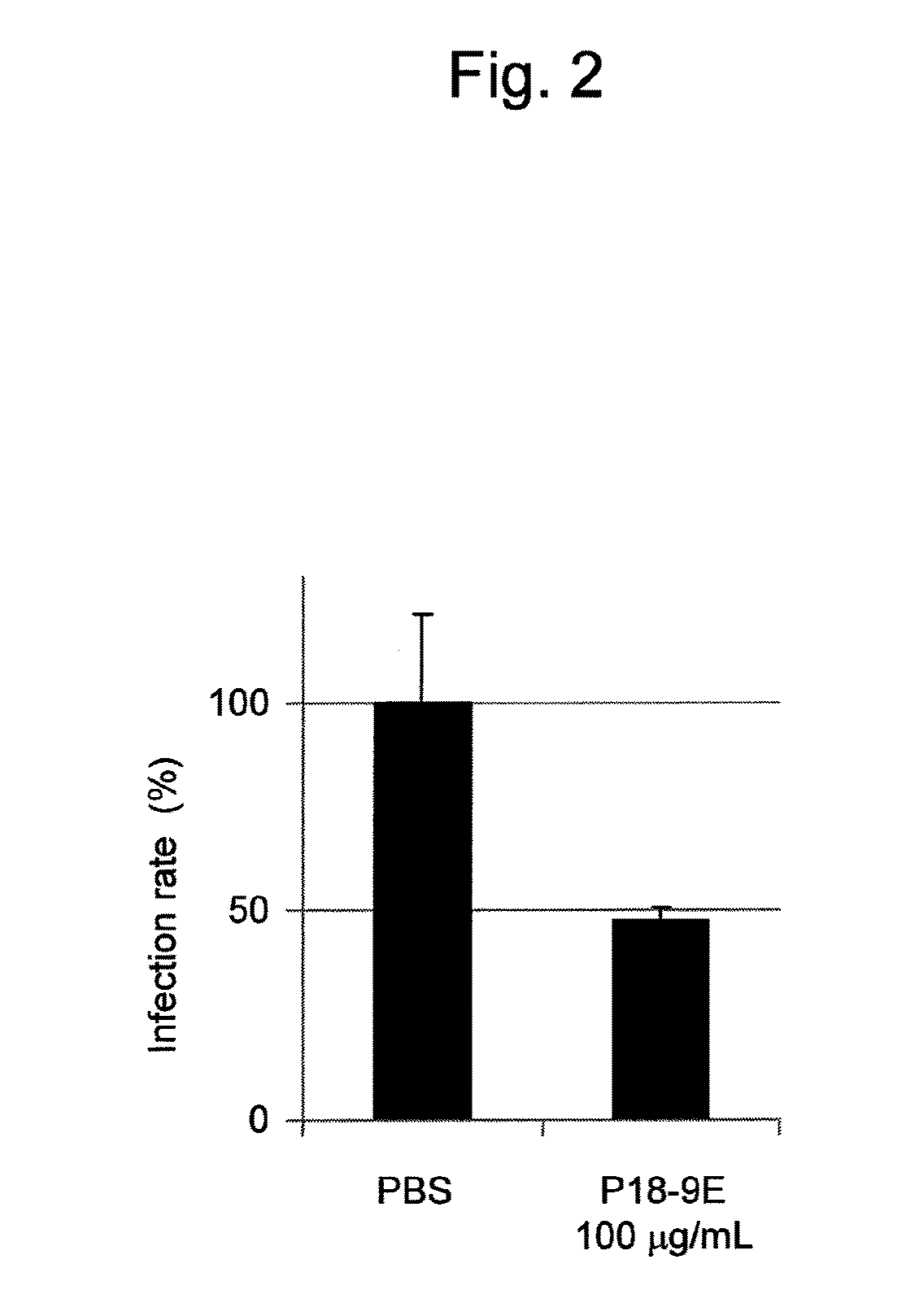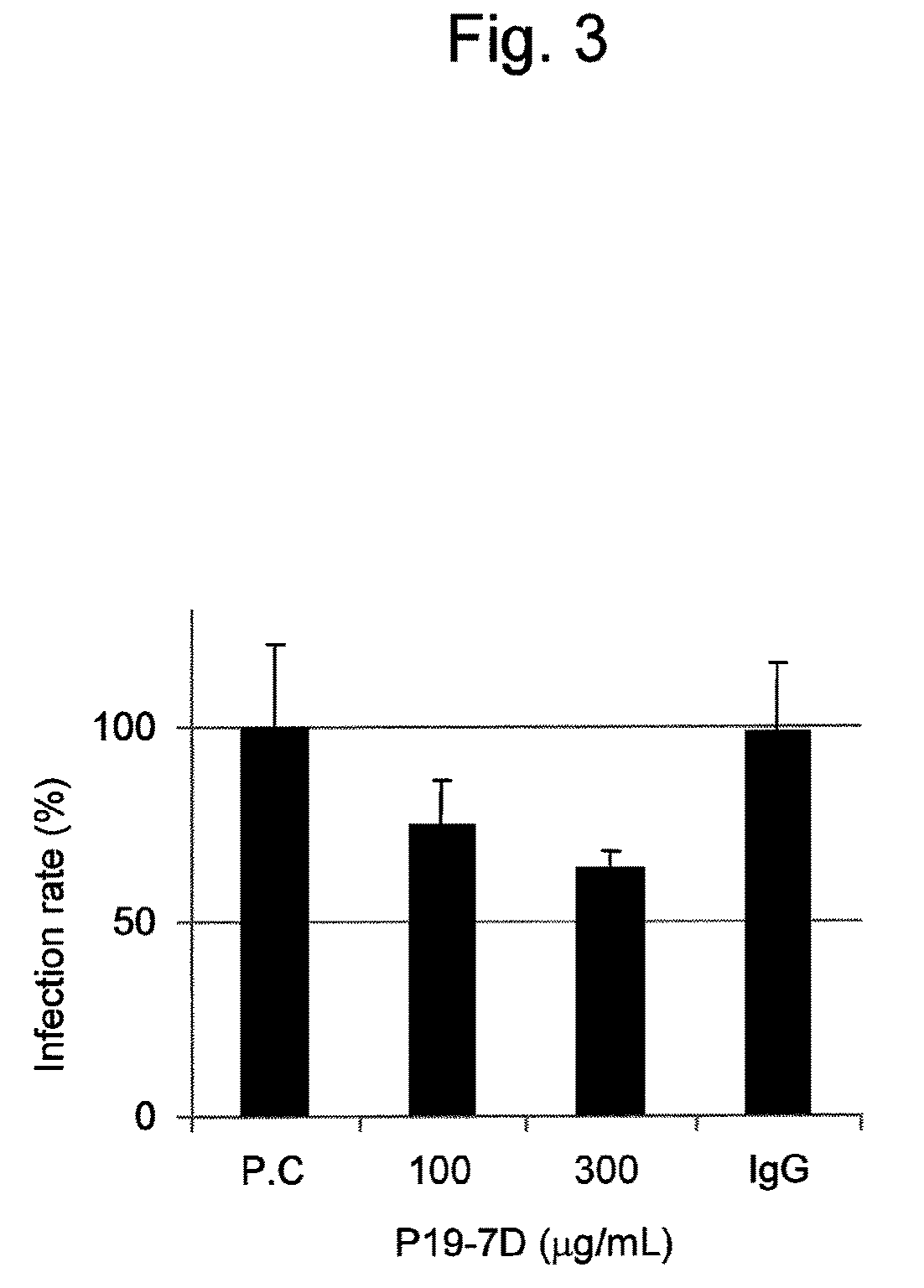Antibody having activity of inhibiting hepatitis C virus (HCV) infection and use thereof
a technology of hepatitis c virus and antibody, which is applied in the field of antibodies having the activity of inhibiting hepatitis c virus (hcv) infection, can solve the problems of difficult to find antibodies useful as anti-hcv agents, difficult to obtain a variety of infection-inhibiting antibodies, and many patients' relapses
- Summary
- Abstract
- Description
- Claims
- Application Information
AI Technical Summary
Benefits of technology
Problems solved by technology
Method used
Image
Examples
example 1
Preparation of J6 / JFH-1-HCV Particles
[0173]cDNA (genomic cDNA) was obtained through reverse transcription of the total region of genomic RNA of the HCV JFH-1 strain (genotype 2a) isolated from a fulminant hepatitis patient. The thus obtained cDNA was cloned into a site downstream of a T7 RNA promoter sequence of a pUC19 plasmid. The obtained plasmid DNA (pJFH-1) was prepared according to the method described in Wakita, T. et al., Nat. Med., 11 (2005) p. 791-796 and International Patent Publication WO 2004 / 104198. The nucleotide sequence of genomic cDNA derived from the JFH-1 strain, which was inserted in pJFH-1, is as shown in SEQ ID NO: 1. The pJFH-1 was digested with EcoR I, and then partially digested with Bcl I. Thus, a plasmid DNA fragment was prepared by excising a fragment (about 2840 bp) ranging from the EcoR I site to the first Bcl I site, and then the plasmid DNA fragment was purified.
[0174]Meanwhile, HCV genomic cDNA derived from the J6CF strain (GenBank Accession No. AF1...
example 2
Purification of J6 / JFH-1 HCV Particles
[0181]Viral particles produced in Example 1 were purified using the following 3-stage process.
(1) Concentration and Diafiltration
[0182]With the use of Hollow Fiber Cartridge (GE Healthcare: 500 kDa cut-off, Model No. UFP-500-C-8A, hereinafter, referred to as “Hollow Fiber”), the culture supernatant containing the HCV particles obtained in Example 1 above was concentrated 60-fold.
(2) Density-Gradient Ultracentrifugation
[0183]To the Ultra-clear 25×89 mm centrifuge tube ((Beckman Coulter, Inc., Catalog No. 344058), 3 mL of TNE buffer (10 mM Tris-HCl (pH 7.4), 150 mM NaCl, 1 mM EDTA) containing cold 60% sucrose was added, and 7 mL of TNE buffer containing 20% sucrose was overlaid thereon. Further, 25 ml of the sample was overlaid onto the TNE buffer containing 20% sucrose. Ultracentrifugation was carried out using a SW-28 (Beckman Coulter) at 28,000 rpm for 4 hours at 4° C.
[0184]The bottom of the tube was perforated using the 25G injection needle (T...
example 3
Inactivation of HCV
[0186]HCV in the virus solution obtained in Example 2 above was inactivated via ultraviolet irradiation. As a source of ultraviolet rays, GL-15 (Toshiba) was used. The solution containing purified HCV particles having an infectious titer of 1×106 ffu / mL was introduced into a silicon-coated polyethylene Eppendorf tube (Assist Co., Ltd,), the tube was placed at a distance from the source of ultraviolet rays, so that the ultraviolet rays would be applied at the intensity of 20 mW / cm2, and UV-C was applied for 5 minutes.
[0187]After ultraviolet irradiation, HCV particles were serially diluted 50-fold, 250-fold, 1.250-fold, 6.250-fold, 31.250-fold, 156.250-fold, and 781.250-fold in DMEM.
[0188]On the previous day, the Huh7 cells were seeded on a 96-well poly-L-lysine-coated plate (Corning 96 Well Clear Flat Bottom Poly-L-Lysine Coated Microplate, Corning) at 1×104 cells / well, the serially-diluted virus particles were seeded thereonto, and culture was conducted at 37° C. ...
PUM
| Property | Measurement | Unit |
|---|---|---|
| dissociation constant | aaaaa | aaaaa |
| time | aaaaa | aaaaa |
| temperature | aaaaa | aaaaa |
Abstract
Description
Claims
Application Information
 Login to View More
Login to View More - R&D
- Intellectual Property
- Life Sciences
- Materials
- Tech Scout
- Unparalleled Data Quality
- Higher Quality Content
- 60% Fewer Hallucinations
Browse by: Latest US Patents, China's latest patents, Technical Efficacy Thesaurus, Application Domain, Technology Topic, Popular Technical Reports.
© 2025 PatSnap. All rights reserved.Legal|Privacy policy|Modern Slavery Act Transparency Statement|Sitemap|About US| Contact US: help@patsnap.com



